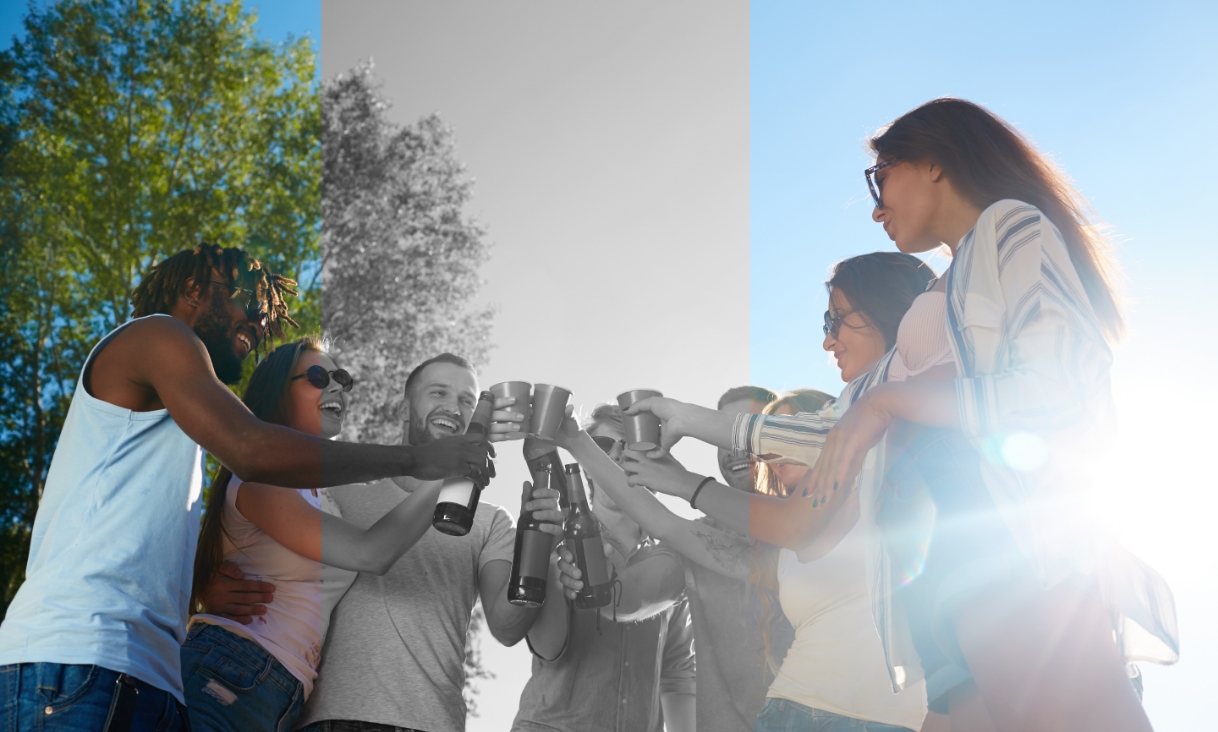
Brands don’t stand still—so neither should their design systems. This article explores how scalability empowers brand designers to build flexible, future-proof brands that evolve seamlessly with audience needs, market shifts, and internal growth.

We often 'see' branding, but many of the components that make-up a brand are invisible.
All brands, big and small, rely on combining different elements to create an overarching brand identity. These elements could be as simple as a logo or as complex as a communications strategy document.
Scalability refers to how efficiently a brand can add or remove these elements depending on emerging opportunities & challenges.
For designers, scalability is an opportunity to plan ahead for success. The more adaptive a brand is, the easier it will be to capitalize on future opportunities or avoid significant issues.
Brand designers strive to deliver the most value possible for the brands they work on or with. Their ability to incorporate scalability has a significant effect on this value.
Accounting for brand scalability involves understanding brand elements, when changes occur, and how change adoption occurs.

People change constantly, and as a result there is a consistent audience pressure on brands to stay relatable.
Societal and economic changes happen regularly in every industry, which affects how brands are perceived by different audiences. What might be popular last year, may no longer be appropriate due to social change — affecting brands that haven't adapted to these changes.
Brands that act on these changes, either in direct response to or in preparation of, use responsiveness to adapt.
To enable responsive capabilities, brands benefit from being well organized to account for potential changes. Scalability is how well a brand has been planned and organized, enabling a variety of responsive functionality to keep it as relevant as possible.
Brand designers look for missed scalability opportunities, which can be resolved by either providing new documentation, planning, or assets. These types of elements are combined to form parts of or even entire brands.
Having these elements, brand designers can strategize what types of changes a brand might need to respond to. These changes can come from a variety of sources, such as market trends, organization growth, and business goals.
The final aspect of scalability involves directing how a brand will communicate with its stakeholders during these changes. Some events require significant changes to a brand, which can be challenging for many organizations when not prepared.
Together, all of these different considerations fit together as part of a scalable brand direction.

Notable or disruptive events in a market are great reasons to meet as a team to discuss the effects on a brand.
Brand designers use different elements when composing a brand. Some common element examples include logos, style guides, and office stationary.
To define and categorize these elements, they can be grouped in the following categories:
This categorization allows brand designers to quickly sort through possible elements depending on the brand they're developing.
These are visual elements including graphics, physical materials, and digital graphic assets. Visuals are typically the most front-facing elements in a brand and are used together to visually represent brand values. Properties like colour and style are often used to differentiate the visual assets that belong to one brand from another.
Logos and brandmarks are the most well known visual elements, serving as a simplified representation of an entire brand.
These are supporting elements exclusively reserved for stakeholders that work under or with a brand, which explain how parts of the brand function.
Guides are an incredibly important resource for brands to use internally, empowering the members of an organization to work consistently by following a defined approach. This adds predictability to a brand, helping teams work consistently regardless of how large an organization is.
Style and messaging guides are common elements used in many organizations that provide useful references for teams when working with brand assets.
These are planning elements that provide insight into the knowledge of a brand. Strategy elements focus on explaining the logic behind brand decisions, rather than how to complete tasks.
Strategies are affirmations of what a brand represents, stating clear goals & expectations to direct internal conversations about how a brand changes over time. Incorporating strategies into brand discussions reduces uncertainty when considering the effects of changes to a brand.
Most strategy elements are documents that explain how a brand seeks to manage stakeholders, market position, and internal workflows.

Branding is ultimately a 'bucket' term used to describe a number of elements that all fit together as part of creating a marketed identity.
Brand perception is affected by a variety of factors, from social norms to market trends & disruptions. Perception is a fundamental component of brands, and is typically the main consideration behind most brand decisions.
However, brand perception differs depending on the individual interacting with a brand. By organizing individuals into groups by similarity called stakeholders, brand designers can more easily account for these perception differences.
As changes in society, economies, and technology emerge — those affected begin to adjust their lifestyles and behaviours accordingly. What might have been convenient previously may no longer be possible due to change in a market.
When the individuals that compose stakeholder groups begin to change, so must brands in order to be as relevant as possible to their stakeholders.
For example, increased usage of mobile devices for web browsing over time has affected the ways that many individuals use websites. These behavioural changes then affect how well site visitors comprehend information that may have been originally designed for desktop audiences. Brands that want to adapt to these behaviour changes may want to introduce new internal guides for developing mobile-friendly content.
Brands that change slowly or not at all, will often see reduced engagement due to a lack of relevancy by their stakeholders.
How fast a brand can change is influenced by factors like the volume of elements used, amount of stakeholders, and organization of assets. Brand designers will refer to design disciplines like Information Architecture and Information Design to help ensure those working with or under a brand can contribute to changes as efficiently as possible.

A notable shift in many markets is the rise of consumer and business AI tools, which have caused numerous businesses to adopt 'AI first' brand identities.
An ongoing challenge for many brands involves getting stakeholders to adopt new changes. The longer individuals interact with brands, the more comfortable they are with the status quo.
Even when aspects of a brand become less relevant, stakeholders may still anchor on to a perception that affects their willingness to accept a new perception.
For example, a local hardware store identifies that a significant number of their customers prefer to shop online. The store is primarily known to offer in-store shopping experiences, and has no digital presence. After deploying a new online store, the store staff notice that most of their customers continue to visit the physical location, despite the option of shopping online.
In this example, the risks are not immediately apparent, but the store staff identify a need for their brand to adapt to new customer behaviours. The main risk they likely anticipate involves customer drop-off due to a lack of convenient shopping methods, which guides the decision to deploy an online store.
However, despite acting appropriately, the store staff fail to see their customer stakeholders adopt this new brand change.
Stakeholder adoption to brand changes requires a concentrated effort from a brand to alter the perception a stakeholder group has of a brand. This means putting forward communication that clearly identifies what the change is and how it benefits stakeholders.
Continuing the previous example, the store staff launch an in-store & digital awareness campaign that alerts shoppers to the availability of their new online store. In this communication, they highlight numerous customer advantages that involve convenience, promotions, and speed. Over time, store staff see an increase in online store activity, which gradually reaches a point where overall sales have increased. Store staff conduct more customer surveys to learn that the added benefits to shoppers have increased the amount of transactions they make with the store on a regular basis.
Brand designers look for opportunities to improve the communication between stakeholder groups. Often, this involves equipping organizations with both the knowledge and tools to inform other stakeholders of how necessary changes will provide new benefits.

At a foundational level, branding is how we interact with each other in regards to an idea.
Many brands rely on reactionary approaches to change, where inaction causes issues if changes aren't made. Although being responsive to perception changes is important, it is equally if not more important to consider the proactive aspects of scalability.
Brand designers evaluate where parts of a brand may need to change most frequently and where a brand may take longer to change. This analysis provides insights into determining when brands may want to start embracing change, and how an organization can take the steps to enact this change efficiently.
Scalability for brands is a proactive consideration, where dedicated efforts are made to ensure brand changes are well-planned, completed efficiently, and widely adopted.
Not every brand requires a brand designer or team to manage its evolution over time, but every brand should be mindful of its scalability. Are assets and resources easy to access? How are stakeholders informed of changes? Are there varying opinions on brand values?
Brand designers taking a proactive approach to brand development will strive to mitigate risks affecting how efficient brands can adapt to change.

Many teams engage in regular brainstorming sessions to help keep a brand moving in the most appropriate direction.
Every organization seeks to empower their teams to take the most efficient actions possible. Reducing obstacles to opportunities results in benefits for both the organization members and other stakeholder groups.
Having the resources and capability to remain relevant consistently over time contributes to higher engagement from stakeholders. For example, an apparel brand that always appears to offer trending options will always succeed in maintaining and growing a customer base. Or, a technology company that supplies their staff with the most up-to-date devices to support their teams to work faster & more efficiently.
People seek convenience, and brands that offer this will be more appealing to them than any alternatives. Being able to adapt to changing needs, remaining a convenient choice for individuals to engage with, is the core goal of creating a scalable brand.
This engagement differs depending on the brand and stakeholders, but is ultimately required for brands to become & remain successful.

Every brand is different, and knowing the context of your brand helps understand what actions will have the most or least impact on your success.
For most brands, less is more. Not every organization requires copious documentation on how to use their assets or adhere to their messaging strategies. Many brands benefit from having fewer elements.
This is because complex brands require greater effort and coordination to enact changes than simpler brands.
It's important to consider complexity when approaching brand scalability, evaluating the capabilities of an organization when determining what type of elements may be required.
Brand designers may be asked to provide additional assets that aren't necessarily valuable from the perspective of scalability. These designers should carefully assess how these requests affect the complexity of a brand, and may instead recommend improving existing assets as a more efficient solution.
There is a constant balancing act within every brand to grow & adapt, while avoiding a burdening experience of managing a complex brand structure. Navigating this requires brand designers to be mindful of the practical aspects of their work, knowing that brands are fundamentally rooted in people helping people.